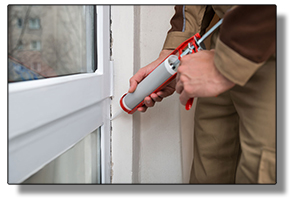Avoiding Air Invasions
Before you purchase a home — whether new construction or old — it's smart to ask for the previous years' utility bills and a blower-door test.
We all know the symptoms of a house that's leaking air. Drafty halls in the winter lead to rooms that suffocate in summer. Then there's the most uncomfortable pain of all high electric bills.
Talk to an energy efficiency expert from your local electric utility, and one of the first things he or she will do is ask about insulation in your house. What type do you have? Is it in the attic, walls, and floors? How about the basement or crawl space?
Chances are leaky homes aren't properly insulated. But it takes more than a roll of fiberglass to stop air invasions.
Sealing the Envelope = Zipping Your Coat
"A major factor in larger monthly energy bills in both the summer and winter is an uninsulated, unsealed building envelope," remarks Wade Rahn, Customer & Technical Service Coordinator for Butler Public Power District, based in David City, Neb. "You can lower energy bills by just identifying and stopping air infiltration."
A "thermal building envelope" separates you from outside elements. It's like wearing a coat when it's cold: If you zip up your coat, it's nice and warm, but if it hangs open, you're left freezing. By properly sealing the building envelope and creating air barriers, and then installing insulation, you keep hot air out in summer and cold air out in winter.
Sealing your home's thermal envelope involves applying caulk and foam to cracks and gaps and correctly installing insulation. If the insulation isn't put in well, it's not doing its job. Typically, incorrectly placed insulation leaves gaps between walls and doors or windows, or where the ceiling meets the walls.
If there's a gap in insulation, heat gets through.
It's All About Air Infiltration
Understanding air infiltration is only half the battle. You have to find and stop the invaders.
"There are many tools we make available to our customers to identify and correct these deficiencies" Rahn relates.
If your local public power district or electric cooperative offers home energy audits, take advantage of them. Your utility's energy advisor will determine if your home needs a blower-door test, one of the best ways of finding out how much air goes in and out of your residence every hour. If a thermal imaging camera is available, the auditor can pinpoint exactly where your home loses air. Typical culprits include the roof, around doors and windows, recessed can lights, attic hatches and pulldown stairs, and unfinished basements or crawl spaces.
Don't overlook the obvious — check where ceilings and floors meet the walls, too. Do you routinely have to clean a cobwebby corner? That's a good indication of air infiltration because insects like fresh air.
"What you don't see could be adding a large portion to your monthly bill" Rahn warns.
Caulk, weather stripping, and expanding spray foam should take care of those problem areas listed above. You can also make a box of rigid foam board for the attic pulldown stairs.
Choosing Insulation
But insulation won't do any good if you don't have proper air barriers — if your house jacket isn't zipped. While loose-fill fiberglass or fiberglass batts keep heat from moving in or out of your house, they do little to stop air flow. In fact, if every single joint and crack is not sealed with caulk or expanding foam, your fiberglass batt insulation does little more than catch dust.
"Discoloration around the edges of your insulation is a sign that outside air and dust is being blown through the insulation" Rahn reveals.
Cellulose, made from recycled newspapers and blown in, provides good attic insulation because it does more to stop air flow. Foam insulation, while the most expensive, also boasts the highest R-value — the effectiveness rating given to insulation — and completely blocks air.
Your local energy professional can help determine the best type of insulation for your house and also help you work out a payback period on your investment. You can also check EnergySavers.gov for more information about insulation, and use their ZIP code calculator to find out how much insulation you need for your location.
The bottom line: "If outside air is getting into your conditioned space, your bills will be higher and you won't be comfortable," Rahn concludes.
